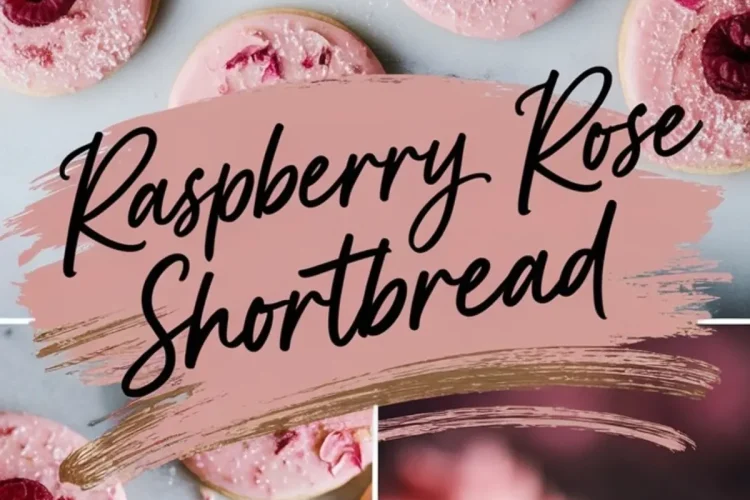I first tasted raspberry-infused cookies as a child, and that day shaped my baking curiosity. My grandmother handed me a tray of sweet shortbread with a faint pink hue, and the memory stayed with me. I still recall how the rosy aroma made me smile, so I decided to recreate that feeling in my own kitchen.
Raspberry Rose Shortbread Cookies remind me of quiet afternoons spent flipping through old recipe notes. I love how the buttery base allows each gentle flavor to stand out. I learned that a floral accent pairs nicely with the natural tartness of raspberries, which led me to experiment with rose water.
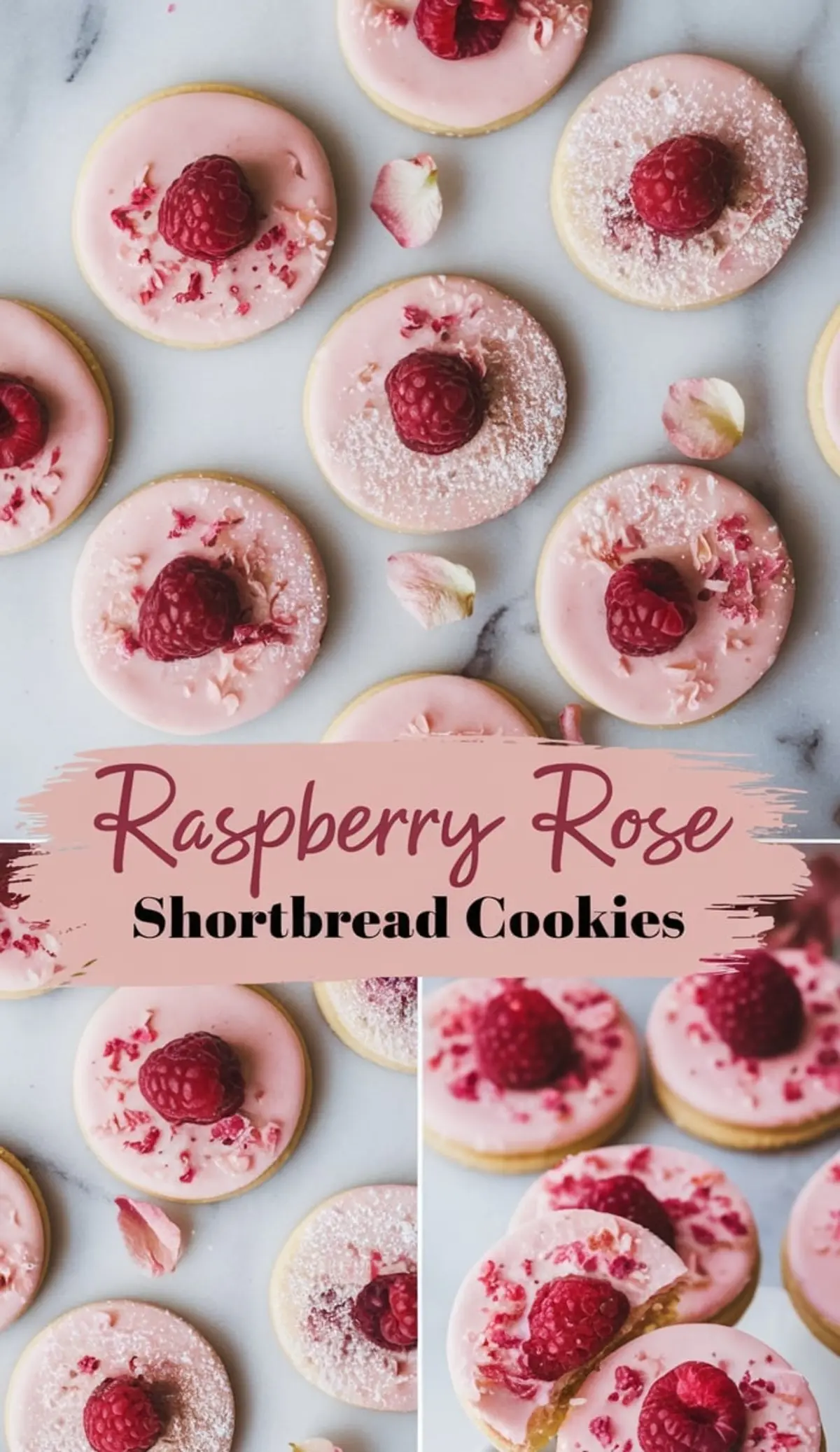
Why Raspberry Rose Shortbread Cookies Work
This dessert brings together softness, fragrance, and a touch of color. Butter, sugar, flour, and salt form a tender dough, which bakes to a subtle golden hue. Vanilla extract adds warmth, while raspberry puree and rose water create a glaze that tastes sweet with a gentle bloom.
My own experiences taught me the importance of fresh fruit over extracts whenever possible. Raspberries lend a vibrant pink tone, and a drop of optional food coloring enhances that visual appeal. I see this recipe as a fun way to welcome spring or celebrate special moments.
Essential Ingredients for a Delicate Cookie Base

Unsalted butter, softened at room temperature, binds the dough and gives it a rich foundation. Granulated sugar sweetens everything and whips into the butter to form a creamy blend. All-purpose flour and a dash of salt keep the cookie structure light yet satisfying.
Vanilla extract rounds out the flavor, so I never skip it. Some bakers prefer adding a hint of citrus zest, but I find pure vanilla suits the rose and raspberry theme. These simple items, handled with care, produce a base that crumbles gently on the tongue.
Crafting the Shortbread Dough

I start by creaming butter and sugar in a bowl until the texture looks fluffy. Then I stir in vanilla, followed by a sifting of flour and salt, which gradually forms a cohesive dough. Some dough might seem dry at first, but consistent mixing brings it together.
Chilling this dough for at least thirty minutes helps each cookie hold its shape in the oven. I usually flatten the dough into a disc, wrap it snugly in plastic, and place it in the fridge. That brief rest allows the gluten in the flour to settle, resulting in a tender bite later.
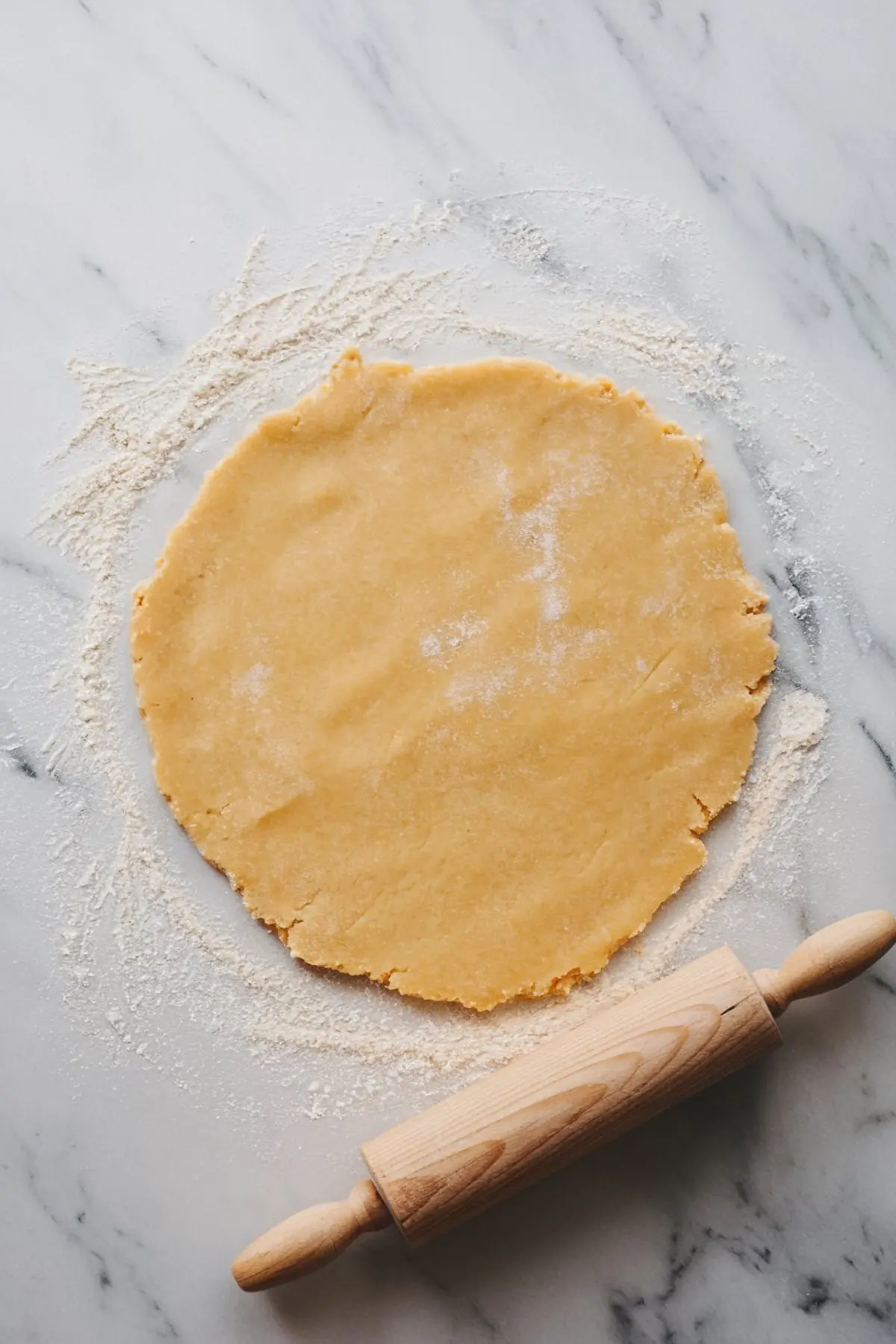
Baking for Golden Edges
I preheat the oven to 325°F before rolling the chilled dough on a floured surface. A uniform quarter-inch thickness provides the classic shortbread shape and texture. I cut out circles, place them on a parchment-lined sheet, and bake for about twelve to fifteen minutes.
It can be tempting to leave them in longer, but I watch for lightly golden edges and remove them before they turn dark. A wire rack allows them to cool completely, which prevents the glaze from melting upon contact. I appreciate that shortbread keeps its delicate form during this stage, so I avoid stacking them prematurely.
Mixing the Raspberry Rose Glaze
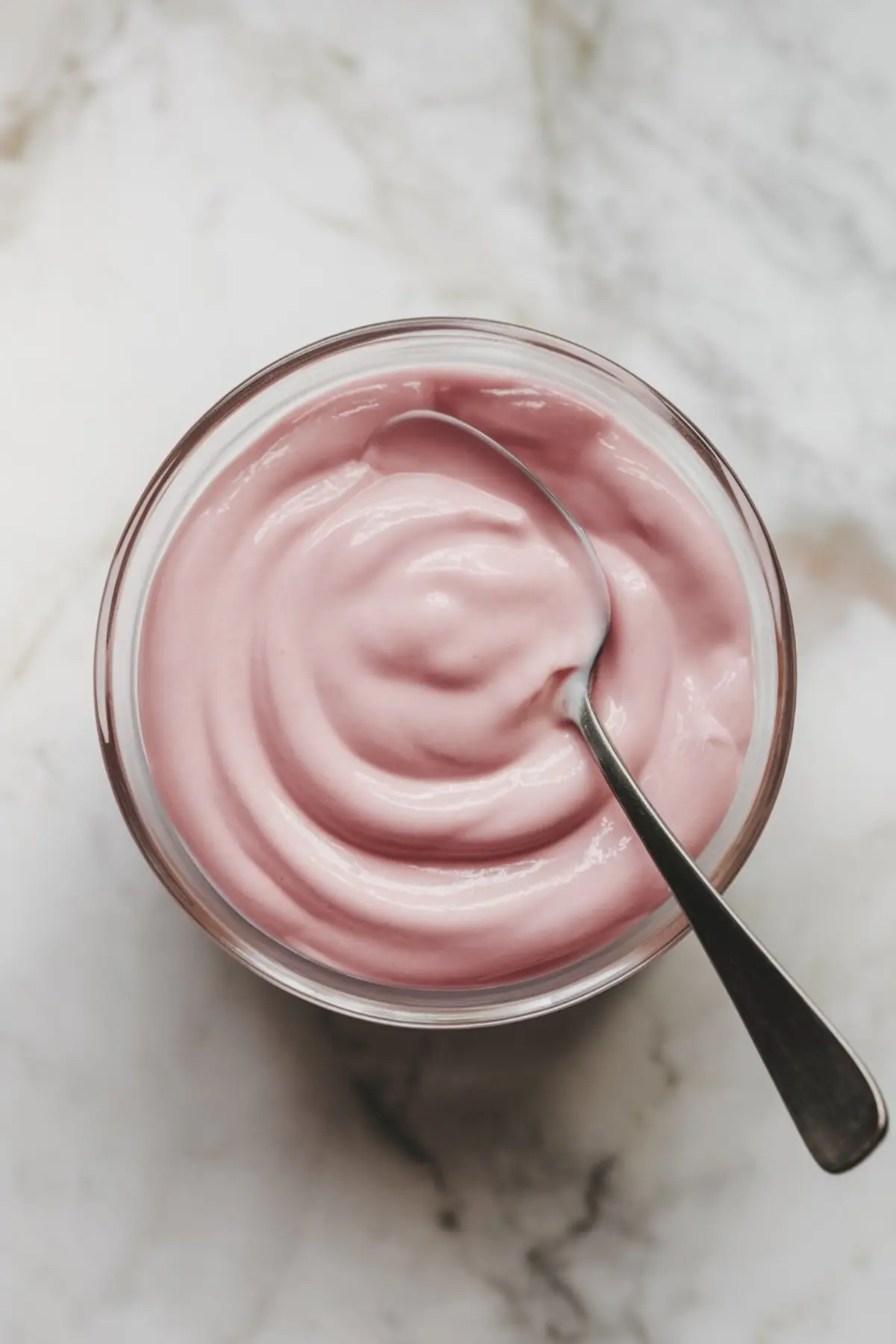
Powdered sugar forms the core of this glaze, and I whisk it with raspberry puree until it looks smooth. Rose water adds a soft floral accent that heightens the berry flavor. You can adjust that rosy element by adding a bit more or less, but a gentle hand keeps it pleasant.
A small amount of heavy cream or milk thins the mixture if it becomes too thick. I sometimes include a drop of pink coloring to emphasize the cookie’s hue, though it’s optional. The key is a consistency that drips slowly from a spoon rather than running off instantly.
Adding Finishing Touches
I dip each cooled cookie face-down in the glaze, lift it, and let excess drip away. Fresh raspberries and dried rose petals sit atop the cookie as soon as the glaze begins to set. A dusting of powdered sugar adds a final look of softness, but that last flourish is optional.
Friends often describe these cookies as a sweet surprise at gatherings, which warms my heart. I encourage you to store them in a single layer until you plan to serve. A little space prevents the glaze from sticking to neighboring cookies.
Flavor Variations and More Shortbread Ideas
I sometimes swap raspberries for strawberries, which leads me to my Strawberry Shortbread Cookies. Another option is the chocolate and caramel blend you find in Millionaire’s Shortbread Cookies. I consider these alternatives helpful when friends request different flavors in the same batch.
You might experiment with shaping the dough into bars instead of circles. That layout is easy to slice, and it still captures the shortbread essence. I sometimes drizzle leftover glaze over the bars for a decorative effect.
Pin It for Future Baking Adventures
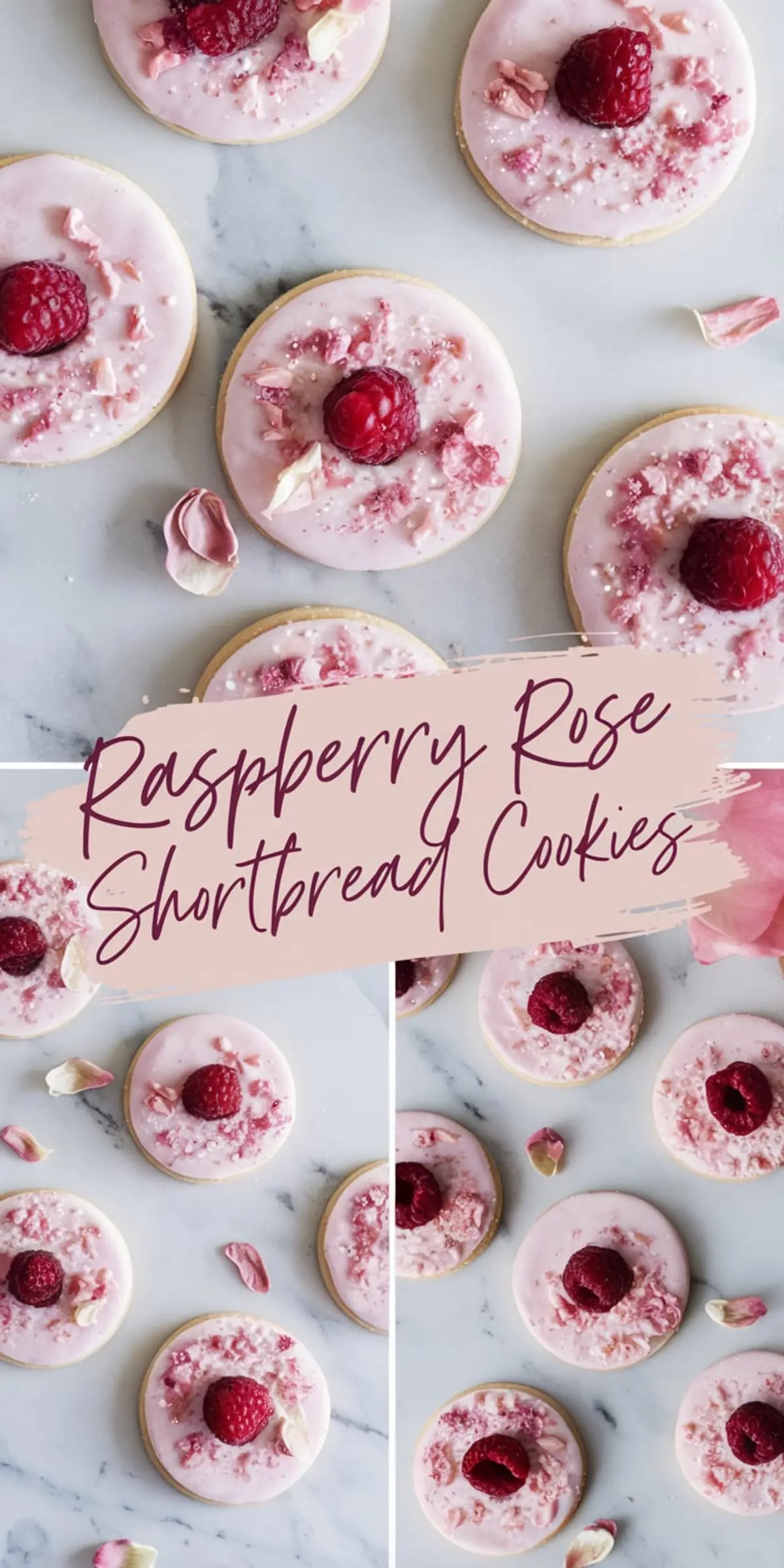
I have shared these Raspberry Rose Shortbread Cookies on my Pinterest boards many times, and they always attract thoughtful comments. I hope you add this recipe to your own collection and keep exploring new cookie ideas. I learn something new each time I bake, and your feedback might inspire a fresh approach.
Please share your results in the comments, especially if you tweak the glaze or use another fruit. I look forward to hearing how these floral cookies brighten your day.
Remember to pin this recipe so you can revisit it when the time is right.
Raspberry Rose Shortbread Cookies Recipe
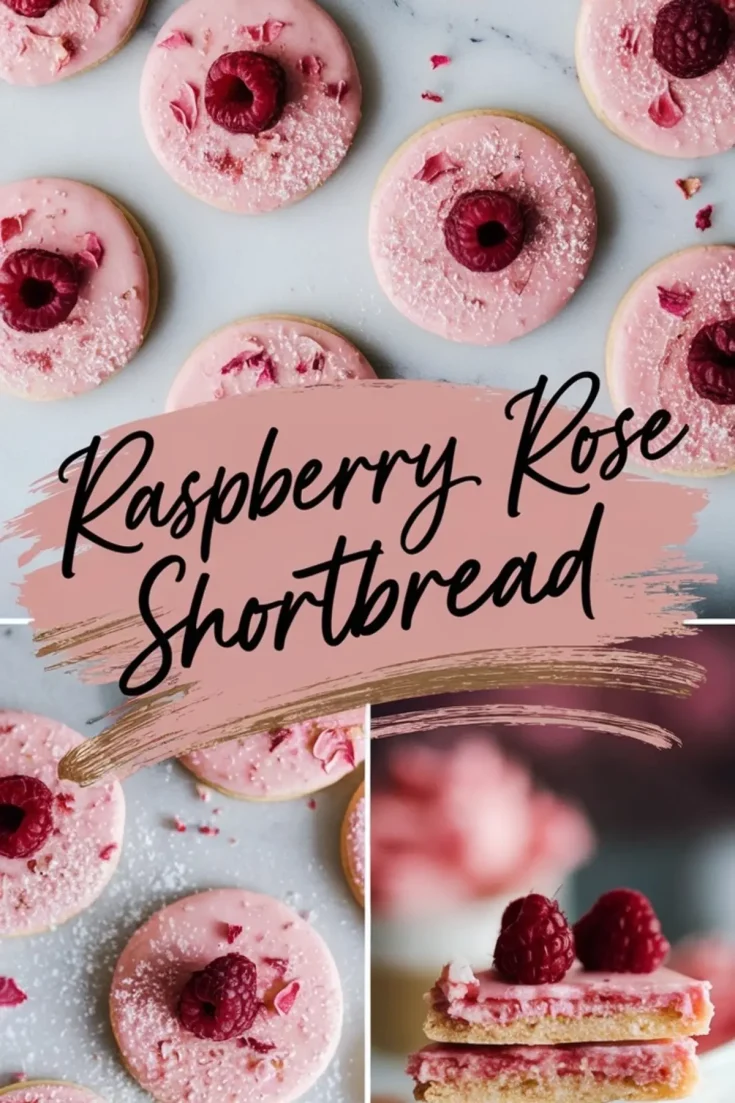
Raspberry Rose Shortbread Cookies are buttery, delicate, and topped with a fragrant raspberry rose glaze. These cookies have a tender texture with a hint of vanilla, perfectly complemented by the floral and fruity glaze. A touch of dried rose petals and fresh raspberries makes them as beautiful as they are delicious.
Ingredients
- FOR THE SHORTBREAD COOKIES:
- 1 cup (226g) unsalted butter, softened
- ½ cup (100g) granulated sugar
- 2 cups (250g) all-purpose flour
- ¼ teaspoon salt
- 1 teaspoon vanilla extract
- FOR THE RASPBERRY ROSE GLAZE:
- 1 cup (120g) powdered sugar
- 2 tablespoons raspberry puree (made from fresh or frozen raspberries)
- ½ teaspoon rose water (adjust to taste)
- 1-2 tablespoons heavy cream or milk (as needed for consistency)
- A drop of pink food coloring (optional)
- FOR DECORATION:
- Fresh raspberries
- Dried edible rose petals
- Powdered sugar (for dusting)
Instructions
- MAKE THE SHORTBREAD DOUGH: In a large mixing bowl, cream the butter and sugar together until light and fluffy, about 2-3 minutes using a hand or stand mixer. Add the vanilla extract and mix again. Sift in the flour and salt, then mix on low speed until the dough comes together. It may appear crumbly at first but will form a cohesive dough with continued mixing. Shape the dough into a disc, wrap it in plastic wrap, and chill for at least 30 minutes in the refrigerator.
- ROLL AND BAKE: Preheat the oven to 325°F (163°C) and line a baking sheet with parchment paper. Roll out the chilled dough on a lightly floured surface to about ¼-inch thickness. Use a round cookie cutter to cut out cookies and place them on the prepared baking sheet. Bake for 12-15 minutes, or until the edges are lightly golden. Let the cookies cool completely on a wire rack before glazing.
- MAKE THE RASPBERRY ROSE GLAZE: In a small bowl, whisk together the powdered sugar and raspberry puree until smooth. Add the rose water and adjust the flavor as needed. If the glaze is too thick, add a small amount of heavy cream or milk until it reaches a pourable consistency. If desired, add a drop of pink food coloring for a deeper pink hue.
- ASSEMBLE AND DECORATE: Spoon or dip each cooled cookie into the raspberry rose glaze, allowing excess to drip off. Place a fresh raspberry in the center of each cookie and sprinkle with dried rose petals for an elegant touch. Lightly dust with powdered sugar for a final flourish. Let the glaze set for at least 30 minutes before serving.
Notes
For the best texture, use high-quality unsalted butter and let it soften at room temperature before mixing. This ensures a smooth and well-incorporated dough. If the dough feels too soft after mixing, an additional 10-15 minutes of chilling time can help prevent spreading during baking.
When rolling out the dough, lightly flour both the surface and the rolling pin to prevent sticking. Rolling the dough between two sheets of parchment paper can also help maintain an even thickness while avoiding excess flour, which can make the cookies dry.
For the raspberry puree, blend fresh or thawed frozen raspberries and strain out the seeds for a smoother glaze. If using frozen raspberries, let them thaw and drain any excess liquid before blending. The amount of puree may slightly vary depending on the juiciness of the berries, so adjust the consistency of the glaze as needed.
Rose water can vary in strength depending on the brand, so start with ¼ teaspoon and add more if a stronger floral flavor is desired. Be cautious not to add too much, as it can overpower the delicate balance of flavors. If rose water is unavailable, a small amount of vanilla or almond extract can be used as an alternative, though the floral note will be different.
The glaze should be thick enough to coat the cookies but still pourable. If it becomes too runny, add more powdered sugar; if too thick, thin it with a small amount of heavy cream or milk. Let the glaze set completely before stacking or storing the cookies to prevent smudging.
For decoration, use edible dried rose petals to enhance both the visual appeal and the subtle floral aroma. Fresh raspberries add a vibrant touch but should be added just before serving if storing the cookies for an extended period, as they can soften over time.
Nutrition Information
Yield
20Serving Size
1Amount Per Serving Calories 103Total Fat 2gSaturated Fat 1gTrans Fat 0gUnsaturated Fat 1gCholesterol 4mgSodium 41mgCarbohydrates 18gFiber 0gSugar 8gProtein 2g

